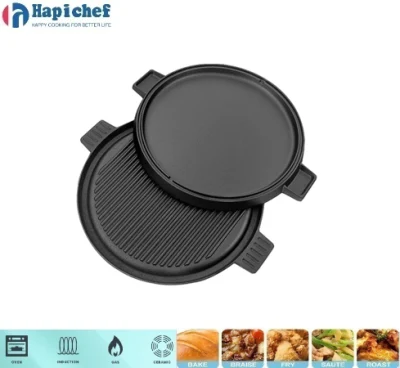curing cast iron pot
Curing Cast Iron Pots A Guide to Proper Seasoning
Cast iron cookware has been a staple in kitchens for centuries. Renowned for its durability, heat retention, and versatility, cast iron pots are a beloved choice among both amateur cooks and professional chefs. However, to ensure optimal performance and longevity, it is essential to properly cure your cast iron pots. Curing, or seasoning, creates a non-stick surface and prevents rust, transforming your cookware into a cherished kitchen tool. In this article, we will explore the steps and benefits of curing a cast iron pot.
Understanding the Importance of Curing
Curing a cast iron pot involves coating it with a thin layer of oil and heating it, allowing the oil to polymerize and create a hard, protective layer. This process not only enhances the pot's non-stick properties but also imparts a rich, natural flavor to dishes cooked within. Additionally, seasoning protects the cast iron from moisture, which can cause rust and deterioration. A well-cured cast iron pot can last for generations, becoming better with age and use.
Gathering Your Materials
Before starting the curing process, you’ll need a few essential items 1. A cast iron pot (new or used) 2. A scrub brush or steel wool (for cleaning) 3. Mild dish soap (only if the pot needs deep cleaning) 4. Cooking oil with a high smoke point (such as flaxseed oil, canola oil, or vegetable oil) 5. Aluminum foil (to catch any drips during the curing process) 6. An oven
Step-by-Step Guide to Curing Your Cast Iron Pot
1. Cleaning the Pot - If your cast iron pot is new, it may have a factory coating that should be removed. Use a scrub brush or steel wool and mild dish soap to thoroughly clean the pot, rinsing it well afterward. If the pot is used, you can skip the soap but should still ensure it is clean and dry.
2. Drying the Pot - After cleaning, dry the cast iron pot completely. You can place it on a burner over low heat for a few minutes or towel dry it to eliminate moisture. This step is crucial, as any remaining moisture can lead to rust.
curing cast iron pot

3. Applying Oil - Pour a small amount of your chosen oil into the pot. Using a paper towel or cloth, spread the oil evenly across the interior surface, including the rim and handle. Wipe off any excess oil to leave a thin layer—too much oil can lead to a sticky surface.
4. Preheating the Oven - Preheat your oven to a temperature of around 400°F (200°C).
5. Curing in the Oven - Line the bottom rack of your oven with aluminum foil to catch any drips. Place the cast iron pot upside down on the top rack. This allows any excess oil to drip off and prevents pooling inside the pot.
6. Baking - Bake the pot for about an hour. After this time, turn off the oven but leave the pot inside to cool gradually. Avoid removing it while it’s hot to prevent thermal shock.
7. Repeating the Process - For enhanced seasoning, you may choose to repeat the oil application and baking process two to three times. Each layer builds upon the last, creating a more robust non-stick surface.
Maintaining Your Cured Cast Iron Pot
Once your pot is properly cured, maintenance is key to keeping it in good condition. Avoid washing it with soap regularly; instead, wipe it clean after each use and dry it thoroughly. Occasionally, you may need to reapply oil and re-season the pot to maintain its protective layer. If you notice any rust, scrub it off and re-season the pot to restore its non-stick properties.
In conclusion, curing a cast iron pot is a rewarding process that not only enhances your cooking but also preserves the longevity of your cookware. With patience and attention to detail, you can transform an ordinary cast iron pot into an extraordinary culinary companion. Enjoy the benefits of flavorful cooking and the enduring legacy of your cast iron cookware!
-
Standard Product Lines from Cast Iron Cookware SuppliersNewsJun.11,2025
-
Searing Techniques for Casserole Cast Iron DishNewsJun.11,2025
-
High-heat Searing on Cast Iron BBQ GrillNewsJun.11,2025
-
Dutch Oven Pizza TechniquesNewsJun.11,2025
-
Best Cast Iron Flat Top Grill for Home UseNewsJun.11,2025
-
Baking Bread in Enameled Cast Iron BakewareNewsJun.11,2025
-
The Science of Enameled Cast Iron Baking PanNewsJun.09,2025
